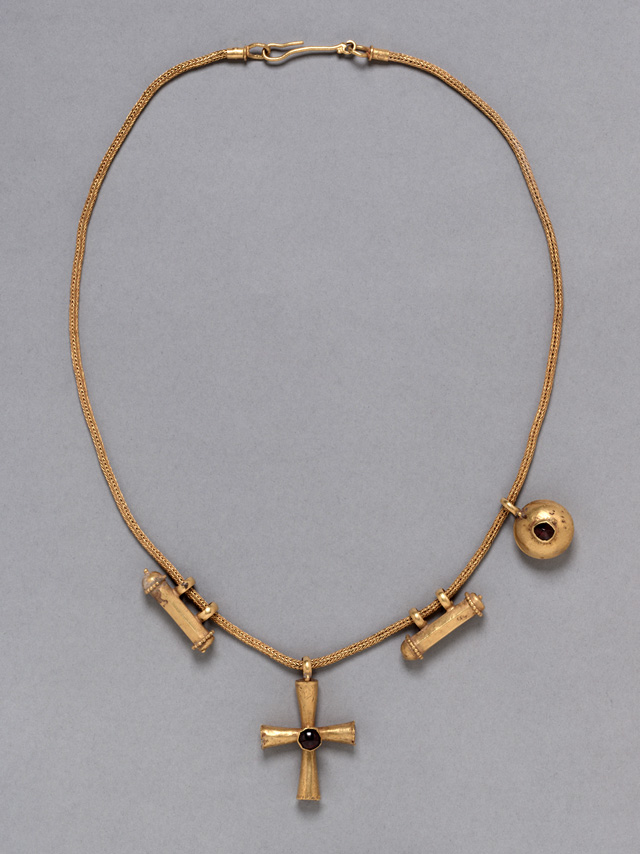Necklace with Pendants
The Cleveland Museum of Art, purchase from the J. H. Wade Fund

 Select the image to zoom
Select the image to zoom
This gold necklace consists of a chain and four gold pendants of different shapes and sizes. Attached to the chain with a plain suspension ring, a gold cross with flaring conical arms forms the central ornamental element. It is decorated on the obverse at the intersection of its arms with a dark red garnet set in a high circular collet. Flanking the cross are two hexagonal gold cylinders, which likely contained magical or sacred texts or substances. Each is suspended from two plain rings and has beaded borders and rounded caps on either side. The fourth pendant, outfitted once again with a plain suspension ring, is circular and decorated on its obverse with a central garnet.
Wearing richly ornamented gold necklaces such as this one was a common practice among elite members of society in the late Roman and Byzantine Empire. In the Christianized Roman Empire, necklaces with cross pendants and amuletic capsules functioned as objects of personal adornment and symbols of social status as well as powerful protective devices. While Christian theologians were not always comfortable with the use of protective amulets, especially if they contained undisclosed texts or substances, their existence is well attested. One of the earliest records for the use of Christian relics in necklaces such as this one comes from St. Gregory of Nyssa, who reported that, at the time of her death, his sister Makrina (d. 379) was wearing a relic of the True Cross on a chain around her neck. Bishop Paulinus of Nola in Italy, an early collector of relics and avid impresario of the cult of St. Felix, sent another fragment of the True Cross to his friend Sulpicius Severus in Gaul. It was enclosed "in a small golden tube" that may have resembled the hexagonal containers on this necklace.




